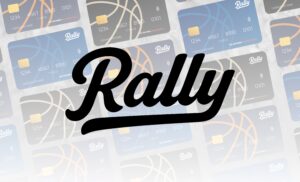From Swipe to Support: How The Rally Card is Helping Rewrite the Future of NIL
The House v. NCAA settlement has forever changed the landscape of college sports. As universities grapple with legal and financial complexities – from sharing revenue to managing donor fatigue – one truth has become clear: fans now play a more central role in athlete compensation than ever before. The question is, how can that fan power be harnessed effectively and scalably?
Enter the Rally Card – a first-of-its-kind fan-powered NIL platform that turns everyday credit card spending into direct support for college athletes. In a world of complex collective structures and mounting booster burnout, Rally offers a grassroots solution designed to empower athletes, energize fans, and ease the burden on schools. Every time a fan swipes their Rally card, a portion goes to the athletes they love. It’s an approach that could rewrite the NIL narrative by making funding as simple as a purchase.
Let’s break down why traditional NIL strategies are hitting a wall, and how Rally’s novel solution is aiming to break through.
Where Traditional NIL Strategies Hit a Wall
Since NIL rules changed, schools and athletes have leaned heavily on two main avenues: booster-driven collectives and corporate sponsorships. While these have produced big headlines (think multimillion-dollar deals for star quarterbacks), they’re not a perfect solution for the broader landscape:
- Donor Fatigue is Real: Boosters at many schools have been tapped repeatedly to contribute to NIL collectives. The same big donors are writing checks over and over, and at a certain point wallets (and goodwill) start to dry up. Not every program has an endless supply of wealthy alumni, and even those that do know that asking for more money each year isn’t sustainable long-term. (Indeed, athletic departments worry about “donor fatigue” as collectives require 8-figure war chests; many boosters will eventually demand on-field results or pull back.)
- Corporate Deals Concentrate on a Few: The majority of brand sponsorships and endorsements go to a small percentage of athletes – typically the stars in high-profile sports. That leaves the vast majority of college athletes (often in Olympic sports, or role players on big teams) without significant NIL opportunities. Data shows the median NIL deal for an NCAA athlete is only a few hundred dollars, and that most lucrative contracts are concentrated among a handful of big names. The promise of NIL for “all athletes” isn’t being fully realized under this model.
- Operational Complexity: Setting up and maintaining donor collectives or vetting endorsement deals is complicated. Schools have to ensure compliance with evolving rules, monitor fair market value, and handle legal contracts – all of which require time, expertise, and money. Smaller programs especially struggle to keep up with the infrastructure needed.
- Struggles for Smaller Programs: As the new House settlement revenue-sharing kicks in, some mid-major and lower-resourced schools are finding it hard to meet even the minimum opt-in levels. They simply don’t have the booster base or business community to generate large NIL funds, leaving their athletes at a disadvantage. (One mid-major, Cal Poly, estimated a $450K annual loss to its budget if it opted into revenue sharing, and reacted by cutting sports.)
In short, what’s missing in many cases is a fan-first, scalable approach to NIL that can complement the big deals and fill in the gaps. This is the void Rally aims to fill.
Rally’s Solution: Turning Everyday Spending into Athlete Support
Rally flips the script by connecting everyday consumer behavior (swiping a credit card) to direct athlete benefit. Here’s how it works:
- Fans sign up for a Rally Card – a team-branded rewards credit card associated with their favorite school or even a specific athletic department.
- Swipe = Support: Every time that fan uses the card for a purchase – whether it’s buying groceries, paying a bill, or getting coffee – a small percentage of that purchase (for example, 1%) is directed into an NIL account for the athlete(s) the fan chooses to support. It’s effectively one cent per dollar automatically earmarked for the athletes. In other words, $0.01 of every $1.00 spent goes to the college athletes (of the fan’s choosing) the card is tied to.
- Monthly Distribution to Athletes: The funds collected from those swipes are distributed to the designated athletes. Rally’s system tracks spending and ensures the money flows to the intended recipients in a transparent way.
- Rewards for Fans: The fan isn’t “losing” that 1% – they still get normal credit card perks and team-themed rewards. In fact, Rally sweetens the deal by offering fan incentives like cash-back on merchandise purchases in addition to exclusive merchandise, or chances for VIP experiences once certain spending milestones are hit.
Key advantages of this model include:
- No Huge Upfront Donations Needed: Unlike a collective that might ask a booster for $10,000 outright, Rally raises money in tiny increments from regular purchases. It scales with fan activity. The more fans use their cards, the more funding flows. A million small swipes can rival a handful of big checks.
- Broad Base = Big Impact: It works for Power 5 and mid-majors alike. For a big school with 100,000 passionate fans, micro-contributions add up to millions (as we’ll show below). For smaller schools, Rally creates an opportunity to engage the whole community – think thousands of alumni and local supporters – rather than depending on a few wealthy donors.
- Reduced Friction for Schools: Rally handles the heavy lifting. Schools and collectives may receive back-end access to data and can set certain parameters, but they don’t have to process payments or police compliance on each transaction – Rally’s platform does that automatically, ensuring everything is above board.
- Inclusivity: Every athlete on a Rally-partnered team benefits, not just the stars. This encourages team unity and addresses one of NIL’s thorniest issues: balancing star treatment with locker room harmony.
How Rally Complements Conference Strategies
Rally isn’t here to replace donor collectives or institutional revenue-sharing – it’s here to amplify and augment them, especially in ways that fit each conference’s needs:
- SEC (Southeastern Conference): The SEC’s massive fan bases mean huge spending potential. Rally taps into that by converting this passion and volume into passive NIL funding. Picture tens of thousands of SEC fans swiping their cards daily – that’s a continuous money stream for athletes, on top of whatever big donors do. It monetizes the breadth of the fanbase.
- Big Ten: A key Big Ten concern is data and compliance (big schools, big regulations). Rally provides transparent tracking, which helps with Title IX compliance and public reporting. Big Ten schools can show, dollar for dollar, how fans’ swipes are benefiting male and female athletes proportionally – a useful tool in a region where academic and legal scrutiny is high.
- ACC: Many ACC schools mix elite programs with smaller-market challenges. Rally offers a cost-effective NIL boost for resource-constrained athletic departments. It’s essentially outsourced fundraising via fans. This can particularly help private ACC schools or those without huge football revenue to still compete in supporting athletes.
- Big 12: The Big 12 prides itself on fan loyalty and grassroots support (think Iowa State or Kansas State’s fan cultures). Rally aligns perfectly with that vibe – it’s about community giving in small doses. It can turn a whole region’s spending (say, all of West Texas for Texas Tech) into a competitive NIL edge, capturing the spirit of “every fan contributes.”
- Group of Five: For the smaller conferences, Rally might be the difference-maker that allows them to opt in to the House settlement. Because Rally’s model doesn’t require large excess athletic department funds, a school can say: “We’ll fund our athletes through Rally card proceeds,” thus participating in revenue sharing without busting their budget. It effectively enables a “bottom-up” funding stream that can complement limited school resources.
In all cases, Rally works in parallel with other efforts. Big boosters can still donate directly to collectives for marquee players, and schools will still invest their own resources as needed. But Rally captures the long tail of fan engagement– those everyday supporters who love their team but aren’t writing big checks. Now, their routine spending becomes part of the solution.
Real-World Impact: A Hypothetical Case Study
To illustrate Rally’s potential, consider a medium-to-large university, say one in the ACC:
- If 50,000 fans sign up for a Rally card (a fraction of many ACC football fan bases) and each spends $1,000 a month on the card (not unusual when putting groceries, gas, bills on it), that’s $50 million in card spending per month.
- Even with a modest 1% back to NIL rate, that generates $500,000 per month, which is $6 million per year in athlete support.
And remember, that’s $6M without a single booster explicitly donating money. It’s coming from fans doing what they already do – spend.
Now multiply that by 10 schools, or consider that some fans might spend more or more fans sign up, and the numbers grow. The beauty is in the scaling: Rally turns volume into value.
For smaller scenarios, even 5,000 fans spending $500 a month would generate $25 million in annual spending – yielding $250,000 per year for a program. That could be transformative for a low-revenue sport or a mid-major school’s entire athletics.
(In fact, NCAA data suggests the initial revenue-sharing payouts under the House settlement might average $1,200 per athlete at some schools. Rally could potentially contribute a significant portion of that if widely adopted.)
How Schools and Athletes Put Rally into Action
For athletic departments and collectives:
- Supplemental Revenue Channel: Treat Rally funds as new money to complement existing booster funds. It can cover things boosters might be less excited to fund – like stipends for every athlete – while letting big donations target facilities or specific stars.
- Integrated Marketing: Promote the Rally card during season ticket renewals, at games, and booster events. Imagine a halftime promo: “Sign up for the [Team Name] Rally Card and support our athletes with every purchase!” Perhaps even offer perks like priority seating or special merch for Rally cardholders to spur sign-ups.
- Athlete-Specific Perks: Some schools might tie Rally to certain teams or athletes. For example, a limited-time Rally card design featuring the women’s soccer team could be marketed to fans of that team, with proceeds bolstering their NIL pool. Fans love exclusivity and showing support for their favorite squad.
- Data & Transparency: Use Rally’s dashboard to track how much is being generated and how it’s distributed. This not only helps with compliance (e.g., tracking funds for Title IX parity) but also tells a great story to recruits: “Our fans generated $X for our athletes last year just by cheering with their wallets.”
For athletes:
- Passive Income: Rally is a set-and-forget income stream. Athletes don’t have to create content, do autograph signings, or negotiate deals. They focus on sports and school, and each month they see a payment that grows as fan engagement grows.
- Stability: Because it’s tied to broad fan behavior, Rally payments are more predictable and steady than one-off endorsements. This can be especially valuable for athletes who aren’t in line for huge NFL/NBA contracts – knowing they have a small but stable income through college can be a relief.
- Incentive to Engage: Athletes might take initiative in encouraging fans to use Rally. It’s a virtuous circle: the more fans swipe, the more athletes benefit, which might motivate athletes to be even more active in the community or on social media to get fans excited about the card.
The Future of NIL Is Fan-Funded
The House settlement has opened the door to a new kind of college sports economy – one where athletes are not just compensated by institutions, but directly by the enthusiasm of the fanbase. However, without scalable tools, that promise could falter, skewing benefits only to the largest programs or leaving athletes drowning in content creation obligations.
Rally offers a practical path forward: everyday fandom turned into everyday funding. It democratizes NIL by saying you don’t have to be a millionaire booster to make a difference – every fan in the stands or at home can chip in simply by going about their daily life. For schools, it’s an appealing prospect: a fresh infusion of support that doesn’t divert from academic budgets or require constant fundraising drives.
We often talk about putting students and fans “at the center” of college sports. Rally does both – it empowers every fan to support every athlete, and in doing so, it creates a more inclusive and sustainable model.
As NIL evolves, look for fan-fueled models like Rally to become a key part of the ecosystem. They bridge the gap between the passion in the stadium and the well-being of the players on the field. And that could be the game-changer college sports has been waiting for.
(Imagine a college sports world in a few years where every school has a baseline NIL fund coming from Rally. The conversations about “haves vs have-nots” might soften, because every community can now contribute to its athletes in a meaningful way. That’s the vision Rally is working toward – a future where everyday fandom fuels extraordinary opportunities for every college athlete.)
References for Further Reading:
- Sports Illustrated (Jan 2024): NIL in 2024 – The Year of Donor Fatigue? – Discusses booster burnout and how collective funding might wane without new approaches. Highlights the need for broader fan engagement in NIL.
- Washington Post (July 2023): Most NIL Payments Are Small – Reveals that the majority of NIL deals are worth less than $500, with only a few big contracts driving up the average. Underscores how many athletes aren’t seeing life-changing money from current NIL systems.
- NCAA Data via On3 (Dec 2022): Shocking Average NIL Earnings – Shows the median annual NIL earning per athlete was about $480, while the average (skewed by a few stars) was ~$21K. Emphasizes the disparity between top earners and typical athletes.
- NIL Data Analysis (Mar 2025): Power 5 vs Others NIL Comparison – Finds that a Power 5 men’s basketball player averaged ~$171K in NIL earnings, whereas athletes in less prominent programs averaged only ~$15–21K. Illustrates the inequity Rally aims to address.
- CBS Sports (Jun 2025): House Settlement’s Impact on Budgets – Notes that schools can pay up to $20.5M (22%) of revenue to athletes, a daunting sum for mid-majors. Supports the idea that external fan-driven funding (like Rally) could be crucial for those schools.




